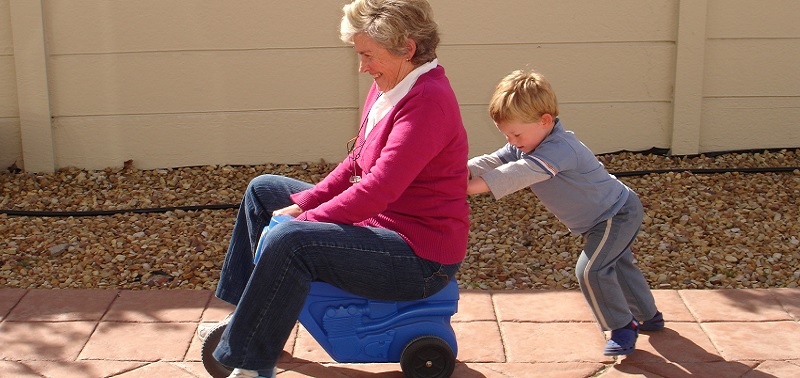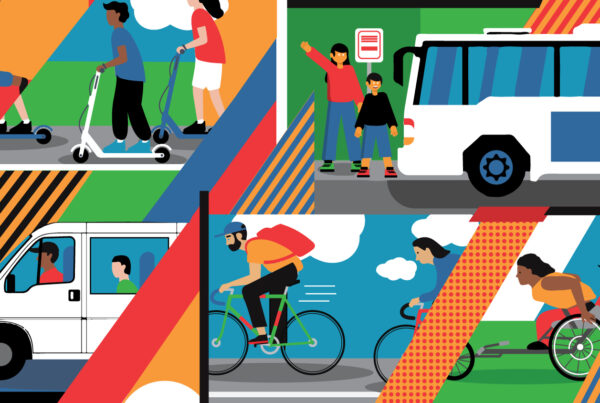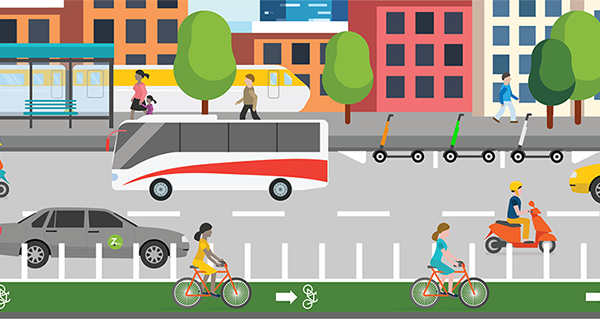More than one in five older Americans cannot drive, due to factors such as declining health, poor eyesight or lack of access to a private auto. Many also have difficulty reaching and using public transit, and options such as paratransit are not always available. As a result, these seniors end up isolated – unable to make it to needed medical appointments, run errands or visit with family and friends.
At the same time, Americans are living longer and retiring later. The population of U.S. residents over the age of 65 is expected to skyrocket from 40 million to 88 million by 2050, threatening to put even greater strain on existing resources.
Yet, believe it or not, the future is also looking hopeful. A variety of shared mobility services have recently launched with a focus on serving the specific needs of elderly passengers. From ridesourcing companies that use trained medical professionals to pilot programs that make shared rides more affordable, here are seven new services helping seniors get around:
1. Freedom in Motion
In September 2015, the City of Gainesville in north central Florida announced it would partner with Uber and a local eldercare network to launch Freedom in Motion, a pilot program providing subsidized rides for residents ages 60 and older. The program, which is funded with a $15,000 city grant, is available to seniors living at two city residential complexes. Participants pay only $1 to $5 per ride, based on their income level. If needed, eligible seniors can also request to receive a limited capacity smartphone to enable them to hail rides through the service.
2. Lyft and National Medtrans Network Partnership
A new partnership between Lyft and the National Medtrans Network, a non-emergency medical transportation benefit manager, launched in January 2016 to help seniors hail Lyft rides using Concierge, a new web-based dashboard designed by Lyft. The Concierge feature allows health care professionals to request rides for patients by entering their name, pick-up location and destination – no smartphone required. According to National Medtrans Network, the company is now booking 2,500 of its 25,000 weekly livery rides in New York City through Lyft, and hopes to eventually move to using Lyft only for these trips.
3. Lift Hero
San Francisco-based ridesourcing company Lift Hero was founded in 2014 by a pre-med student whose grandmother was having difficulty making it to her weekly physical therapy appointments. Lift Hero allows passengers to hail rides through its mobile app or over the phone, and relies on specially trained drivers, many of whom are nurses or other medical professionals. Drivers use their personal cars, similar to Lyft or UberX, and provide riders with door-to-door assistance, including helping with bags, groceries or assisted living equipment.
4. SilverRide
Like Lift Hero, SilverRide is a San Francisco-based transportation company that specializes in serving senior citizens. However, it doesn’t use an app, instead requiring riders to book trips 24 hours in advance through its staff of travel concierges. The service uses a fleet of specially branded vehicles, quotes prices in advance, and bills directly to a credit card upon trip completion so riders don’t need to worry about carrying cash. Additionally, SilverRide offers monthly excursions to concerts and museums to help seniors get out, have fun and meet other SilverRide members.
5. National Volunteer Transportation Center
While volunteer drivers have long been a crucial part of the senior transportation safety net, in 2014 the Community Transportation Association (CTAA) partnered with several organizations to launch a National Volunteer Transportation Center to gather information on specific programs and activities together in one place. The Center provides a nationwide database of nearly 1,000 volunteer ride organizations as well as resources for drivers looking to contribute their time. Volunteer rides are independently organized through faith groups, transportation associations and nonprofit organizations such as ITNAmerica, which has been providing door-to-door rides for seniors across the country for the last decade.
6. Via
Although not specifically marketed to seniors, microtransit provider Via – which uses dynamically routed shuttles to provide shared rides in Manhattan and downtown Chicago for a flat fee – has attracted the attention of older riders. According to a recent New York Magazine story, nearly 30 percent of Via’s New York City customer base is over age 55. Seniors appreciate Via’s relatively reasonable fares, the story suggests, and enjoy the social aspect of sharing a ride (one rider compared it to the ride-shares she used to help organize from Riverdale to Manhattan in the 1950s).
7. Uber and AARP “Life Reimagined” Partnership
While increasing access to transportation is of paramount importance, shared mobility can also help provide opportunity for seniors who are still comfortable behind the wheel. In 2015, Uber and AARP announced a partnership to recruit retired seniors to become ridesourcing drivers through AARP’s “Life Reimagined” effort, which focuses on guiding older Americans through life transitions. According to AARP, the partnership with Uber gives older citizens an opportunity to learn more about the sharing economy and earn income as drivers on the Uber platform. As part of the collaboration, Uber is conducting outreach through a series of national events and incentive programs. A recent New York Times story also highlighted how this partnership can help older Americans augment their retirement income and offer an enjoyable, highly flexible work schedule.
There is no doubt that new forms of shared transportation will play an integral role in expanding mobility options for seniors and other traditionally underserved populations – such as disabled and low-income residents – in the years ahead. However, given the scale of the problem and the rapid growth of America’s elderly population, a concerted, national effort will likely be needed to address this issue in a meaningful way. Additionally, as many have pointed out, ridesourcing providers and private operators as a whole still have a long way to go when it comes to providing truly equitable service.
Still, these new partnerships and pilots offer a glimpse into how mobility providers and the public sector can collaborate to deliver innovation and address pressing social equity issues. More such cooperation will undoubtedly be needed in the coming years, especially as public agencies look to increase efficiency in paratransit and non-emergency medical transportation.
For more information on mobility trends and needs, be sure to review SUMC’s new Shared-Use Mobility Reference Guide.
Image credit: Wikimedia



